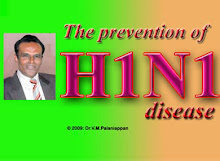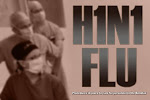H1N1 is back, claims 7 lives
July 9: With the monsoons, the dreaded H1N1 fever is back. Though precautionary measures have been taken, the virus has already caused seven deaths this year in the State, five of them just in the last couple of months. It is during this time of year that we need to take precautions. But we now have experience in controlling this virus. We have already sent out monsoon advisories to all districts to ensure that every case with H1N1 like symptoms gets treated at the earliest,” said Dr T.S. Cheluvaraj, joint director, communicable diseases, department of health and family welfare.
“There was one death reported in the month of May in Bengaluru, the remaining were from Bellary, Davangere, Shimoga, Gulbarga, Udupi and Tumkur,” said Dr Cheluvaraj. He said that this year, to date, the department has received 1007 samples for testing from across the State of which 45 samples have tested positive for H1N1.
Dr Cheluvaraj emphasised that the health department is better prepared now to deal with the virus. “This year we are very well equipped and have more than sufficient stock of Tamiflu, which has been distributed to health centres even at the district level.” Instructions have been issued to healthcare professionals to be on the lookout for cases with symptoms of respiratory tract infections, cough, cold and running nose. “As of now there are five centres in the State that are equipped to test samples for H1N1: NIMHANS, Narayana Nethralaya, Command Hospital and Manipal Hospital in Bengaluru, and KMC Manipal, which takes care of samples in the coastal districts,” the doctor added.
“So far the number of cases coming to us for tests has been consistent and so too the positivity, but the monsoon is the season when there is a risk of incidence in such cases,” said Dr V. Ravi, head of the neuro-virology department at NIMHANS. At the Rajiv Gandhi Institute of Chest Diseases (RGICD) only one case of H1N1 has been reported, that of a 62-year-old male. “He has been treated and discharged from the hospital. But we know that the monsoons could be risky so we are geared up with adequate stock of medication,” said Dr Shashidhar Buggi, director, RGICD.
H1N1, popularly known at ‘swine flu’, had reached pandemic proportions in 2009. Some 1,500 people died of it in India. The virus spreads between humans through coughing or sneezing and people touching something with the virus on it and then touching their own nose or mouth.
Your Comment







